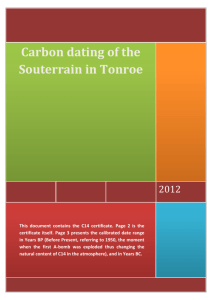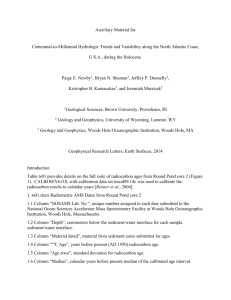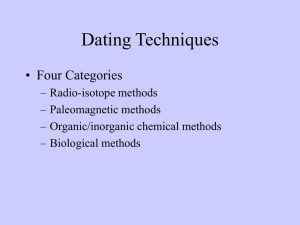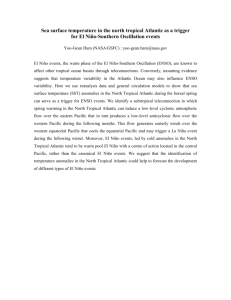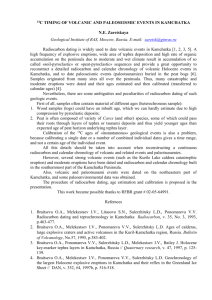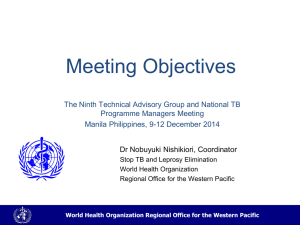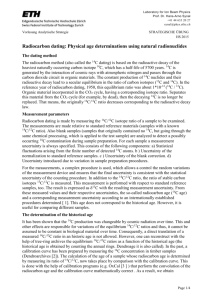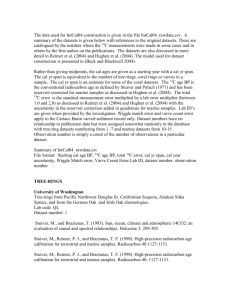Deep Water Circulation and Chemistry Jigsaw: Materials: At the
advertisement
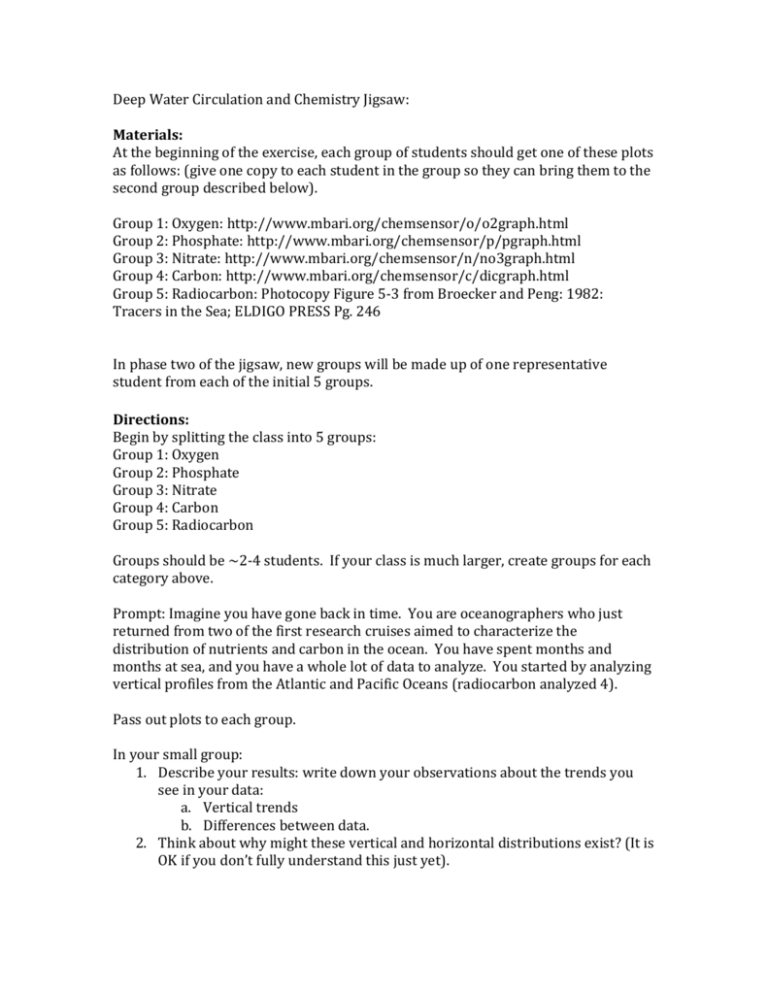
Deep Water Circulation and Chemistry Jigsaw: Materials: At the beginning of the exercise, each group of students should get one of these plots as follows: (give one copy to each student in the group so they can bring them to the second group described below). Group 1: Oxygen: http://www.mbari.org/chemsensor/o/o2graph.html Group 2: Phosphate: http://www.mbari.org/chemsensor/p/pgraph.html Group 3: Nitrate: http://www.mbari.org/chemsensor/n/no3graph.html Group 4: Carbon: http://www.mbari.org/chemsensor/c/dicgraph.html Group 5: Radiocarbon: Photocopy Figure 5-3 from Broecker and Peng: 1982: Tracers in the Sea; ELDIGO PRESS Pg. 246 In phase two of the jigsaw, new groups will be made up of one representative student from each of the initial 5 groups. Directions: Begin by splitting the class into 5 groups: Group 1: Oxygen Group 2: Phosphate Group 3: Nitrate Group 4: Carbon Group 5: Radiocarbon Groups should be ~2-4 students. If your class is much larger, create groups for each category above. Prompt: Imagine you have gone back in time. You are oceanographers who just returned from two of the first research cruises aimed to characterize the distribution of nutrients and carbon in the ocean. You have spent months and months at sea, and you have a whole lot of data to analyze. You started by analyzing vertical profiles from the Atlantic and Pacific Oceans (radiocarbon analyzed 4). Pass out plots to each group. In your small group: 1. Describe your results: write down your observations about the trends you see in your data: a. Vertical trends b. Differences between data. 2. Think about why might these vertical and horizontal distributions exist? (It is OK if you don’t fully understand this just yet). Now split small groups up. Form new groups of 5 with one representative from each of the original groups above. Prompt: Now you are at a workshop to compare your preliminary results and interpretation with colleagues who went on the same cruises (but measured different properties). In your new group: 1. Present your figure. Note the trends you observed in your data. (You do not need to discuss your interpretation just yet). 2. Once everyone has gone around and described their observations, discuss which elements showed similar trends, which were different? Opposite? 3. Discuss what mechanisms might be driving the horizontal distributions of these elements? Next lead a class-wide discussion to see what each group came up with. It might be helpful to make a table on the board to summarize which properties were relatively “higher” vs. “lower” in Atlantic vs. Pacific deep water (horizontal distribution). Orin surface vs. deep water (vertical distribution). This may be the first time students think about 14C in the ocean. I encourage students just to think about relative differences between basins and the shapes of the curves rather than the values. Different classes may require more of a discussion about the source of 14C to the atmosphere and surface waters depending up on background. Students should recognize that 1. The biological pump drives vertical distributions of these elements 2. Thermohaline circulation and the biological pump act together to cause differences between Atlantic vs. Pacific deep waters. Bonus activity: (I do this in the next class during our review of the previous class activity): Prompt: Based on the radiocarbon data from the vertical profiles, calculate the deep-water mass radiocarbon “age” of Atlantic vs. Pacific deep waters. How can you use this to calculate the transit time for a deep water mass to travel from NADW to deep Pacific water? 14Cage = -8033ln (1+(delta14C/1000)) This is an example of how oceanographers have used tracers to calculate the mixing time of the ocean.

